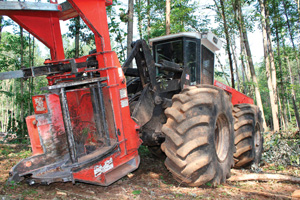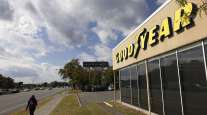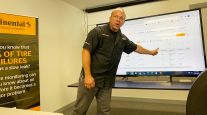Contributing Writer
Dealing With Tire Inflation Problems

Editor’s note: This is a sidebar to the story, ‘Traction Is Most Important Characteristic for Off-Road Tires, Fleet Executives Say.’
As with on-road tires, incorrectly inflated vocational tires can be problematic — and so can mismatched tires.
Curtis Decker, manager of product development for Continental Tires’ North American commercial-vehicle market, said fleets and operators often underinflate steer-axle tires because they don’t realize how much of a load the tire is carrying. Conversely, the drive and trailer positions often are overinflated, hardening the tire so that the tread pattern can’t flex and eject trapped stones.
“Tires are designed to operate under specific pressure, and when you change that air pressure, you change the shape of the tire, and therefore it doesn’t perform as it was designed,” said Siri Speegle, off-road tire marketing manager for Bridgestone.
Paul Wise, director of product management and marketing for Schrader International Inc., which makes tire-pressure monitoring systems, said off-road systems have sensors designed to withstand the environment. He also said those systems are sturdier than those for on-road and always are retrofitted, so they are more expensive. However, he added, the payback on the investment can be rapid.
Matching tires also is important for good performance. Roger Best, original equipment manager for Bridgestone commercial mining solutions, said tires should have the same construction throughout — either radial or bias. He added that the more tires match in size, tread and wear, the better. If one tire is new and the others are older, it can create an imbalance that wears on the newer tire. Dual tires should match closely in diameter. If not, the smaller tire will skip and slide, wearing irregularly, while the other tire will carry most of the load and be subject to failure.
Michael Aguon, national product manager for the Alliance Tire Group, said tires on both sides of the axle should have similar tread wear. If not, the newer tire will carry more load and, because it gets better traction, pull the machine to one side, stressing the vehicle.
Aguon also said front tires on tractors, backhoes and loaders should rotate 1-5% faster than those on the rear. If the front wheels aren’t turning a little faster because the rear ones are worn, the vehicle pushes the front tires, wearing the tread, affecting the turning radius and lowering fuel economy.
“Frankly, the best thing you can do is invest in four new tires when a worn tire needs replacing,” he said. “You’ll avoid damage to your drivetrain, excessive wear on your new tires and the hassles of diminished performance.”
Aguon added, “The savings in fuel cost from new tires can quickly overcome most of the ‘cost savings’ you feel like you’re getting by not replacing the older ones.”




